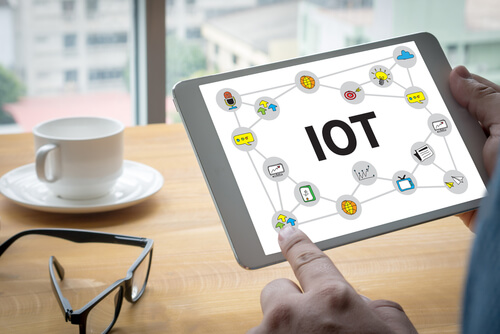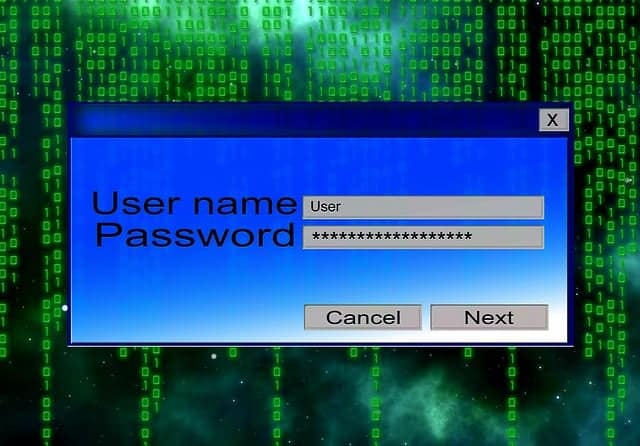The integration of Internet of Things (IoT) technology in the field of education has brought about significant advancements in the way knowledge is shared and acquired. With the incorporation of IoT applications in education, the learning experience has been greatly improved, enabling students and educators to access and utilize information in a more efficient and interactive manner.
This article examines the role of IoT in modern education, focusing on its various applications and the advantages it offers to educational institutions. From smart classrooms equipped with IoT devices to personalized learning platforms, IoT has paved the way for a more immersive and tailored educational experience.

However, the implementation of IoT in schools also raises concerns regarding security and privacy. Therefore, this article also explores the importance of IoT security in educational settings and the measures that need to be taken to mitigate potential risks.
Overall, the integration of IoT in education holds great promise in transforming the teaching and learning process, but it is crucial to address the associated challenges to ensure a safe and effective learning environment.
Iot Applications in Modern Education
IoT applications have revolutionized modern education by incorporating innovative technologies into the learning process. With the advent of smart classrooms, students now have access to a wide range of IoT devices that enhance their learning experience. These devices, such as interactive whiteboards, smart projectors, and wearable devices, enable students to engage actively in their lessons and make learning more interactive and enjoyable.
One of the key benefits of IoT in education is its ability to provide real-time data and analytics. Teachers can track students’ progress and identify areas where they may need extra support. This data-driven approach allows for personalized learning, where each student can receive tailored instruction based on their individual needs and abilities.
However, with the increased use of IoT devices in schools, there is also a need for robust security measures. IoT device security is crucial to protect sensitive student data and prevent unauthorized access. Schools must implement strong encryption protocols, regular software updates, and user authentication processes to ensure the safety and privacy of their students.
Improving Student Engagement Through Iot
To enhance student engagement, IoT applications in modern education incorporate innovative technologies that foster interactive and immersive learning experiences. By leveraging IoT devices and systems, educators can create a dynamic learning environment that captivates students’ attention and encourages active participation. Here are three ways in which IoT improves student engagement:
- Personalized Learning: IoT allows for personalized learning experiences tailored to individual students’ needs and preferences. Smart devices can collect and analyze data on students’ learning patterns and progress, enabling teachers to provide targeted feedback and customized learning materials. This personalized approach not only increases engagement but also enhances students’ understanding and retention of the subject matter.
- Collaborative Learning: IoT facilitates collaborative learning by connecting students and enabling real-time interaction and collaboration. Through IoT-enabled devices, students can collaborate on projects, share ideas, and work together regardless of physical location. This fosters teamwork, communication skills, and critical thinking abilities, all of which are crucial for success in the modern workplace.
- Gamification: IoT can gamify the learning experience, making it more enjoyable and engaging for students. By incorporating game elements such as points, leaderboards, and rewards, educators can create interactive and competitive learning environments that motivate students to actively participate and strive for excellence.
Enhancing Personalized Learning Experiences

One way to enhance personalized learning experiences in modern education is by leveraging IoT technologies. The Internet of Things (IoT) refers to the network of connected devices that can collect and exchange data. In the context of education, IoT can play a significant role in creating tailored learning experiences for students.
By integrating IoT devices into the classroom, educators can gather real-time data on student performance, preferences, and needs. This data can then be used to personalize the learning process, allowing educators to adapt their teaching methods and content to meet the individual needs of each student.
To illustrate the potential of IoT in personalized learning, consider the following table:
| IoT Application | Benefits |
|---|---|
| Smart Classroom | Real-time monitoring of student progress, adaptive learning modules |
| Wearable Devices | Tracking physical activity, monitoring health and well-being |
| Personalized Content Delivery | Tailored educational content based on individual learning styles and interests |
| Intelligent Tutoring Systems | Virtual tutors that provide personalized feedback and guidance |
| Data Analytics | Analyzing student data to identify patterns and trends, enabling targeted interventions |
Benefits of Iot in Education
By facilitating seamless connectivity and data exchange, the integration of IoT in education brings forth numerous benefits. Here are three key advantages of incorporating IoT in the education sector:
- Improved Learning Experience: IoT devices provide students with interactive and immersive learning experiences. For example, smart classrooms equipped with IoT-enabled devices such as smartboards and virtual reality headsets can enhance student engagement and understanding of complex concepts. Additionally, IoT can enable personalized learning, allowing students to learn at their own pace and receive customized feedback.
- Enhanced Efficiency and Productivity: IoT in education streamlines administrative tasks and improves operational efficiency. For instance, IoT-enabled attendance systems automatically track student attendance, reducing manual effort for teachers. Moreover, IoT devices can automate routine tasks like grading, freeing up educators’ time to focus on instruction and supporting students.
- Enhanced Safety and Security: IoT can contribute to a safer learning environment. IoT-enabled surveillance systems can monitor school premises in real-time, ensuring the safety of students and staff. Additionally, wearable IoT devices can be used to track student location and notify authorities in case of emergencies.
Security Considerations for Iot in Schools
Security considerations are of utmost importance when implementing IoT in schools. Protecting student data and preventing unauthorized access should be top priorities.
With the increasing number of connected devices in educational settings, it is crucial to have robust security measures in place to ensure the safety and privacy of students’ information.
Protecting Student Data
The protection of student data in IoT-enabled schools is a critical consideration for ensuring the privacy and security of personal information. As schools increasingly adopt IoT devices, it is essential to implement robust security measures to safeguard student data from potential threats. Here are three key aspects to consider:
- Data encryption: Implementing strong encryption protocols can protect student data from unauthorized access and ensure confidentiality.
- Secure network infrastructure: Schools need to establish secure and reliable network infrastructure to prevent unauthorized access to student data through IoT devices.
- Regular security audits: Conducting regular security audits can help identify vulnerabilities and address them promptly, ensuring continuous protection of student data.
Preventing Unauthorized Access

To ensure the protection of student data in IoT-enabled schools, implementing robust security measures is crucial, particularly in preventing unauthorized access to sensitive information. With the increasing adoption of IoT devices in educational settings, schools need to be vigilant in safeguarding their systems from potential cyber threats.
One effective way to prevent unauthorized access is by setting up strong authentication protocols. This can include using multi-factor authentication, where users need to provide multiple pieces of evidence to verify their identity. Additionally, implementing encryption techniques can help protect data in transit and at rest, making it difficult for hackers to intercept or decipher the information.
Moreover, regular security audits and updates are essential to identify and address any vulnerabilities in the system. Schools should also provide proper training and awareness programs for staff and students to educate them about the importance of cybersecurity and how to detect and report any suspicious activities.
By implementing these security measures, schools can significantly reduce the risk of unauthorized access and protect the privacy and confidentiality of student data.
| Security Measure | Description |
|---|---|
| Strong Authentication | Requires multiple pieces of evidence to verify identity |
| Encryption Techniques | Protects data in transit and at rest |
| Regular Security Audits and Updates | Identifies and addresses vulnerabilities |
| Training and Awareness Programs | Educates staff and students about cybersecurity |
| Incident Detection and Response | Enables timely detection and response to security incidents |
Future Prospects of Iot in Education
With the growing advancements in technology, the future prospects of IoT in education are promising and hold great potential. As the world becomes increasingly interconnected, the integration of IoT into educational institutions is expected to revolutionize the way students learn and educators teach.
Here are three key areas where IoT is set to make a significant impact:
- Enhanced Learning Experience: IoT devices can provide personalized and immersive learning experiences for students. Smart classrooms equipped with IoT sensors can collect data on students’ preferences, learning styles, and progress, allowing educators to tailor their teaching methods accordingly. This level of customization can greatly enhance student engagement and comprehension.
- Improved Efficiency and Accessibility: IoT-enabled devices can automate administrative tasks such as attendance tracking and resource management, freeing up valuable time for educators to focus on teaching. Additionally, IoT can enhance accessibility for students with disabilities by providing assistive technologies that facilitate learning and communication.
- Promoting Collaborative Learning: IoT devices can foster collaboration among students by enabling seamless communication and sharing of resources. For example, IoT-enabled platforms can facilitate group projects by allowing students to collaborate remotely, share ideas, and access learning materials in real-time.
Frequently Asked Questions
What Are Some Specific Examples of Iot Applications in Modern Education?
IoT applications in modern education can be seen in various areas such as smart classrooms, personalized learning, and remote education. These applications use IoT devices to enhance the learning experience and facilitate better communication and collaboration between students and teachers.
How Does Iot Technology Improve Student Engagement in the Classroom?

IoT technology enhances student engagement in the classroom by providing interactive learning experiences. Through connected devices, students can access real-time data, collaborate with peers, and participate in immersive simulations, fostering active participation and deeper understanding of the subject matter.
Can You Provide Some Examples of How Iot Enhances Personalized Learning Experiences?
IoT enhances personalized learning experiences by providing real-time data on students’ progress, enabling adaptive learning platforms, facilitating remote learning through connected devices, and enabling personalized feedback and recommendations based on individual learning needs and preferences.
What Are the Specific Benefits That Iot Brings to Education?
IoT brings numerous benefits to education, including improved connectivity, real-time data collection and analysis, personalized learning experiences, and enhanced collaboration. It also enables remote learning, smart classrooms, and efficient resource management, revolutionizing the way education is delivered.
What Are the Main Security Considerations That Schools Should Take Into Account When Implementing Iot Technology?
When implementing IoT technology in schools, it is crucial to consider security measures. Schools should prioritize data protection, privacy, and network security to ensure a safe and secure environment for students and staff.
Conclusion
In conclusion, the integration of IoT technology in modern education has revolutionized the learning experience, enhancing student engagement and enabling personalized learning.
The benefits of IoT in education are vast, from smart classrooms to tailored learning platforms.
However, it is crucial to address security considerations and take necessary measures to ensure a safe and effective learning environment.
With continued advancements and improvements, IoT holds great promise in transforming the way we teach and learn in the future.
